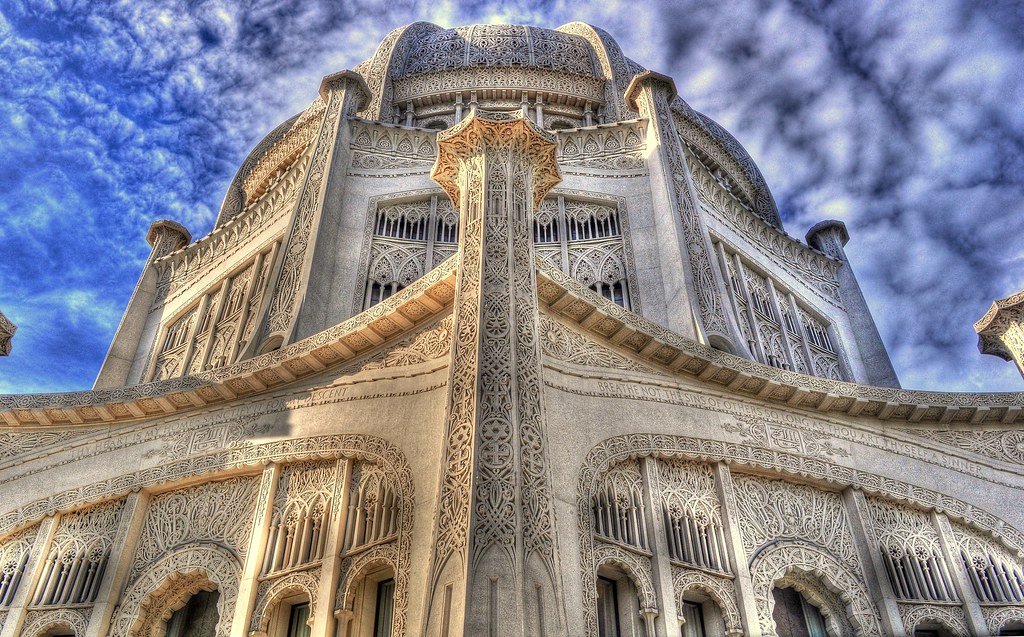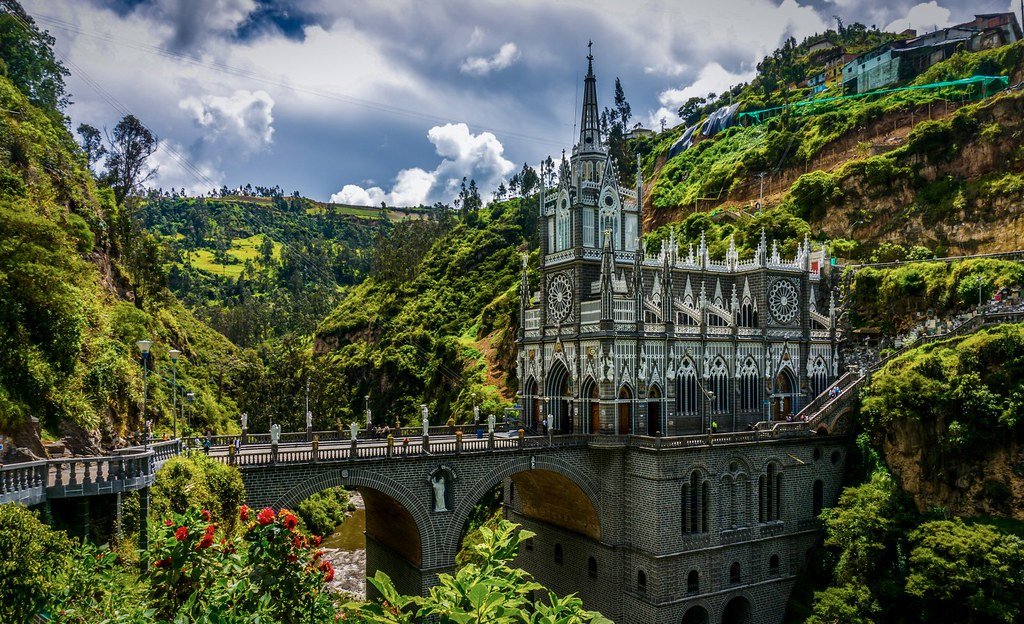Mexico City is a flourishing metropolis with a plethora of historic and modernist architectural sites. Here are a few attractions scattered around the city.
A street at the center of Mexico City. Flickr user Franx’. CC BY-NC 2.0.
A Gothic cathedral sits next to a glassy business building. Brick houses with arabesque detailing overlook the noisy streets full of men in suits and street food vendors. Mexico City is growing every year; its multiplicity of neighborhoods hosts a variety of architectural styles and people from all over the globe. Often regarded as an oasis of modernity in the entirety of Latin America, this urban center has been labeled the “next Paris'' or as a new version of New York. Given its history of colonialism and its willful modernization under Porfirio Diaz, Mexico City’s compilation of architecture is oftentimes representative of its past and present. Here’s a cursory glance at a few of Mexico City’s sites of modernization, and the contradictions at play in these structures.
The Central Library of the National Autonomous University on a gloomy day. Mark Hogan. CC BY-SA 2.0.
1. Central Library of the National Autonomous University
Juan O’Gorman’s Central Library of the National Autonomous University (UNAM) is a spectacle to behold. This behemoth holds the qualities of international modernist architecture: its 14-story frame sits above a glassy ground floor which looks over a neatly gridded yard. Yet, O’Gorman’s building doesn’t possess the stoicism of standard midcentury modern architecture; its distinctively Mexican-themed mural makes the building a historic storybook. Like a visual epic, the “Historical Representation of Culture” mural includes the expansive timeline of pre-conquest Mexico, the Spanish conquest, Mexican modernization and Mexico’s future. One can spot mosaics of the beginnings of Tenochtitlan, and the clash between pre-Hispanic Mexico and vehicles of Spanish colonialism. O’Gorman believed his mosaics of these cultural signifiers would make the library “different from the rest of the buildings within University City” by giving it a distinctly “Mexican character.”
A corner of the exterior of Casa Luis Barragan. Forgemind Archimedia. CC BY 2.0.
2. Casa Luis Barragan
Casa Luis Barragan, which was built in 1948, looks as if it were suspended in time and space: colorful red walls jut into the placid blue sky, although they are immobile in detail and structure. Luis Barragan is a world-renowned architect whose eccentric architectural style can be recognized in his buildings’ solid colors, geometric shapes and sparsity of details. This vibrant house is a foil of O’Gorman’s direct homage to Mexico as a nation; it highlights formalist qualities over political values, which Barragan considered secondary to his architecture. Barragan is an expert at manipulating elements of nature. The play of shadows within the structure itself and the use of greenery turns an otherwise intimidating monument into a livable habitat. Although countless travel journals have attached Mexican modernist themes to Barragan’s home, it resists the supposed markers of “Mexican” aesthetics and remains a private site of great accomplishment.
Thousands visit the Basilica de Guadalupe daily. Alex Marduk. CC BY 2.0.
3. Basilica de Guadalupe
Pedro Ramirez Vazquez’s seminal work, the Basilica de Guadalupe, is a sacred destination for thousands of Catholics around the world. The area it sits on, Tepeyac, was originally a place where Aztecs worshipped Tonantzin, or “the divine mother.” As a result of the suppression of Aztec religions during Spanish occupation, the Basilica de Guadalupe was built for Our Lady of Guadalupe who was said to have appeared before St. Juan Diego. The original colonial basilica was severely damaged in 1921 in a bomb attack, but Vazquez’s new Basilica de Guadalupe renovated the sacred site. This site was just one of Vazquez’s projects dedicated to industrializing Mexico, as shown in its modernist disk shape and the sheer mass of its structure.
Monumento a la Revolucion sitting at the city center. Ismael Villafranco. CC BY 2.0.
4. Monumento a la Revolucion
Located in the Cuauhtemoc borough of Mexico City, Monumento a la Revolucion is a stately memorial which celebrates the Mexican Revolution of 1910. Mirroring many of the United States’ federal buildings in Washington, the monument’s perfectly symmetrical Roman dome is fortified by brick pillars which meet at the four corners of the structure. Carlos Obregon Santacilia continued the project after it had been abandoned by both the state and the French architect they commissioned for the building, Emile Benard. Oliverio Martinez’s smooth sculptural representations of independence, reform, agrarian laws and labor laws protect the mausoleum on its four corners. In this marriage of neoclassical elements and Mexican nationalism, the Mexican government actively constructs its origin story via the conventions of Roman and French architecture.
Close-up shot of Martinez’s sculpture on Monumento a la Revolucion. Flickr user tchelseat. CC BY-NC 2.0.
A view of the facade of La Santisima Church. Wikimedia user Protoplasmakid. CC BY-SA 3.0.
5. La Santisima Church
La Santisima Church is covered in the Spanish churrigueresque style, which is the Baroque style that was dominant in Spain during the 18th century. Its facades are adorned with ornate carvings of the apostles, angels, Jesus and Mary placed in between its many columns. Although it appears relatively normal in a city full of extravagant churches, the distinctive religious iconography on its exterior deems La Santisima Church worthy of close attention.
Museo Soumaya shines brightly on sunny days. Flickr user Dan. CC BY 2.0.
6. Museo Soumaya
No piece of architecture screams “contemporary” like the Museo Soumaya. Museo Soumaya, which houses thousands of sculptures and paintings from pre-Hispanic Mesoamerica up to European impressionist works, is a piece of art itself. The Plaza Carso building in particular is an intriguing malformed shape dressed in millions of aluminum hexagons. Taking inspiration from Frank Lloyd Wright’s Guggenheim in New York, Fernando Romero designed the Plaza Carso as an enigma: the concept behind the work is intentionally vague, and the usefulness of its parabolic shape questionable.
Front view of Museo Anahuacalli. Javier Castañón. CC BY-NC-ND 2.0.
7. Museo Anahuacalli
Although Diego Rivera is widely known for his painted murals, his exploration of three-dimensional design is just as noteworthy. Rivera’s Museo Anahuacalli was made of his own accord; Rivera wanted a space for his collection of over 50,000 relics of pre-Hispanic Mesoamerica. The style of the building is an amalgam of various Mesoamerican styles, taking inspiration from Teotihuacan and the temples of the Mayans and Aztecs. The exterior of the museum has the symmetry of neoclassical architecture, while its interior is heavily influenced by the Aztec pyramid.
Many scholars speculate that the development of uniquely “Mexican” architecture, seen through Mexico City’s plethora of sites, stems from a desire for national representation. Mexico City’s postcolonial realities are found in its very infrastructure: one cannot ignore the presence of Catholicism, the reminders of a pre-Hispanic Mesoamerica, and the complications of deliberate industrialization. Juan O’Gorman’s library attempts to artfully marry the past, present and future. Casa Barragan is the work of a maverick who resists the narrative of a national architecture. The grandiose Basilica de Guadalupe is holy ground for millions of Catholics, yet it strays from the Gothic style of typical European cathedrals.
The sheer amount of voices and styles in this sprawling metropolis is telling of its complicated relationship with modernization. There is no shortage of historic, formal, religious and artistic values in each of Mexico City’s buildings.
Heather Lim
Heather recently earned her B.A. in Literatures in English from University of California, San Diego. She was editor of the Arts and Culture section of The Triton, a student-run newspaper. She plans on working in art criticism, which combines her love of visual art with her passion for journalism.





















































